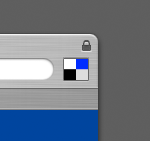Burn for OSX
September 24, 2006
Besides Roxio Toast (expensive) or Finder.app (limited), I haven’t heard of many good CD burning applications for OSX. Today I came across Burn, which seems like decent, free alternative. It’s not perfect, but it manages to fit most of the features of Toast into a simple, lightweight interface. More importantly, it didn’t give me any problems when I burned four or five DVD data discs tonight.
Tomorrow I’ll try converting from AVI to DVD. That’s something I could never get Toast to do reliably (at least with my DVD player), even though it was supposedly a feature.
Update: Just after I posted this, someone told me about Disco, a soon-to-be-released burning application that looks like it will have one slick UI. Having recognized some of the people behind this project, I’m sure it will be a strong contender once it’s out.

